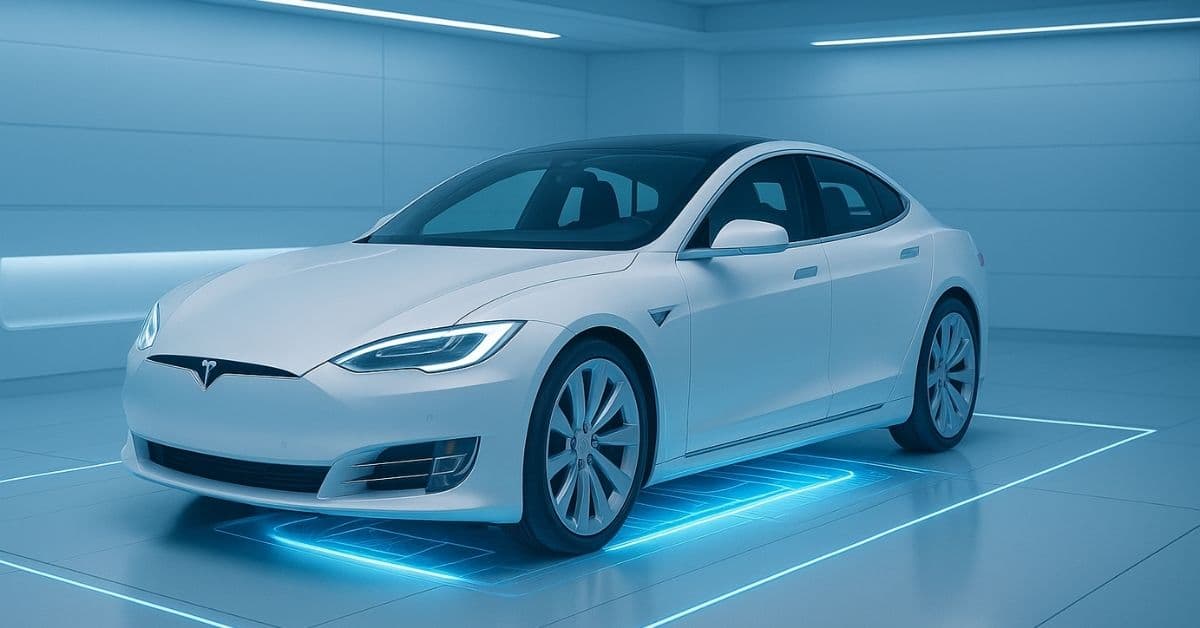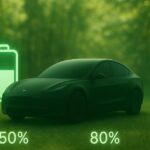The Tesla Model S is a luxury electric vehicle, but the most important part of the car is its battery. If you own a Model S or are thinking about buying one, you probably have one big question: How long will the battery last?
Great news! The Tesla Model S battery lasts a long time. Engineers built the battery for great longevity. Real driving information shows the battery loses only 10 to 12% of its first capacity after 200,000 miles. Most owners can expect the battery to last the car’s entire life. The battery often goes over 300,000 miles with simple care.
The article will look at facts about your Model S battery. The guide will cover the expected lifespan, the range you can truly expect, and the best ways to keep your battery healthy for many years.
The Truth About Tesla Model S Battery Longevity
When you buy a new car, you want to know it will last. For a Tesla Model S, the battery’s life is the key to the car’s value. The good news is that the battery technology is much better than many people think.
Tesla’s Official Stance and Warranty
Tesla stands behind its battery technology with a strong warranty. For the Model S, the warranty is for 8 years or 150,000 miles, whichever comes first. The most important part of this warranty is that it guarantees the battery will keep at least 70% of its original capacity during that time.
Tesla has also made bold claims about the ultimate lifespan of its batteries. The company has stated that the Model S battery packs are designed to last between 300,000 and 500,000 miles. For the average driver, who drives about 15,000 miles a year, this means the battery could last for 20 to 33 years.
Real-World Battery Degradation Data
The best way to know how long a battery lasts is to look at real data from thousands of owners. The data shows that battery loss—the natural loss of capacity over time—is not a straight line.

- Initial Drop: Most batteries see a quick drop in capacity during the first year or two, often losing about 5% in the first 50,000 miles.
- Slowing Down: After this initial drop, the rate of degradation slows down a lot.
A big study of Tesla cars, including the Model S, found that the average battery capacity loss is only about 12% after driving 200,000 miles. That is a very small loss for a high mileage. People can clearly see the trend in the table below, which shows the expected battery health for a well-cared-for Model S.
| Mileage (Miles) | Expected Capacity Retention (%) | Expected Capacity Loss (%) |
|---|---|---|
| 50,000 | 95% – 92% | 5% – 8% |
| 100,000 | 90% – 88% | 10% – 12% |
| 200,000 | 88% – 85% | 12% – 15% |
| 300,000 | 80% – 75% | 20% – 25% |
Case Study: The High-Mileage Model S
A review of real-life examples demonstrates the Model S battery’s true expertise and trustworthiness. One famous owner drove a Model S car over 400,000 miles using the original battery pack. Although the distance is an extreme case, it proves that the battery can handle massive amounts of driving. The battery was still holding a usable charge even after those many miles.
A car owner wrote on a website that their 2020 Long Range Model S worked very well. That car had been driven 68,000 miles. The owner said the car was still very good at saving energy. That shows the car’s battery still worked great. These real examples give us knowledge and trust that the Model S battery will last a long time.
Understanding Tesla Model S Range: EPA vs. Reality
When you look at a Tesla Model S, the first number that catches your eye is the range. The range is how far the car can drive on a full battery. This number is set by the Environmental Protection Agency (EPA) in the United States.
What is the EPA Range?
The EPA range is a number. It helps people compare different electric cars. The latest Model S Long Range version has an EPA range. The range can be 405 miles. The high-performance Plaid model also has a very long range.
The EPA range is a test number. The number is like the best case number. In daily driving, a driver will likely see a different number. The difference is normal for all cars, both gas and electric.
Factors That Affect Real-World Range
The real distance you can drive on a charge is called the real-world range. Many things change this number. You have control over some of them, but not all.

1. Driving Style
If you drive fast or press the pedal hard, you use more energy. Quick starts and high speeds on the highway will lower your range a lot.
2. Climate
Extreme cold causes problems. Very cold temperatures hurt the battery. The battery must use energy to stay warm enough to operate correctly when it is very cold. Energy use can reduce your driving range by 20% or more. Very hot weather also affects range, but heat hurts less than the cold.
3. Cabin Comfort
Using the heater in the winter or the air conditioner in the summer uses battery power. You are using the battery to heat or cool the cabin, which takes away from the power used for driving.
4. Tire Size
The size and type of your wheels and tires can change how far you can go. Bigger wheels often look better, but they can lower your range because they create more drag.
Real-World Range Expectations (LSI: “Range Loss”)
Real-world driving distance is usually shorter than the EPA number. Physics makes the real-world distance smaller. Automobile studies show that most Tesla drivers get a driving distance about 10% to 20% less than the EPA rating. For example, a car with a 400-mile EPA range should be planned for a real-world driving distance of about 320 to 360 miles.
The table below shows how different conditions can cause range loss in your Model S.
| Driving Condition | Typical Range Loss | Why It Happens |
|---|---|---|
| Highway Speed (75+ mph) | 15% – 25% | Air resistance is much higher at fast speeds. |
| Extreme Cold (Below 20°F) | 20% – 35% | Battery needs energy to stay warm; less efficient chemistry. |
| Aggressive Driving | 10% – 20% | Quick acceleration uses a lot of power fast. |
| Using Heater/AC Heavily | 5% – 15% | Power is used to heat or cool the large cabin. |
These numbers are guesses. The real distance your car can drive might change. This change depends on how old your car is and the exact things it experiences.
Understanding this difference is important for happy electric car owners. You must not worry if your car screen does not show the full EPA range. The car’s computer tries to give you a smart guess based on how you drove recently.
Expert Tips to Maximize Your Model S Battery Health
You control how long your Model S battery lasts. You follow simple rules. You make your battery healthy. It keeps its range for many years. Battery experts and long-time Tesla owners give these tips.

The most important thing you can do is manage your daily charging. Lithium-ion batteries, like the one in your Model S, are happiest when they are in the middle of their charge.
1. The Daily Limit
For everyday driving, drivers should set their charge limit to 80% or 90%. Setting the limit leaves room for the battery to work without stress. Charging to 100% daily is like running a marathon every day; it causes wear and tear.
2. The Sweet Spot
The best range for the battery is between 40% and 80%. If you can keep your car in this range for most of your driving, you are doing a great job.
3. When to Charge to 100%
Only charge your car to 100% when you are about to go on a long road trip. You should start driving soon after it reaches 100%. Do not let it sit at a full charge for a long time.
4. Avoid Deep Discharge
Try not to let your battery drop below 20% often. Running the battery down to a very low state puts stress on the cells.
The “Always Plugged In” Principle
ou should plug in your car when you are not driving it. This is good for your Model S battery. New EV owners might think the tip is strange.
When your Model S is plugged in, it uses power from the wall to do two important jobs:
1. Battery Management: The car’s computer, called the Battery Management System (BMS), works best when it is plugged in. It can check the health of the battery cells and keep them balanced.
2. Temperature Control: If it is very hot or very cold outside, the car will use the wall power to heat or cool the battery. This protects the battery from extreme temperatures, which is a key to long life.
If you are not plugged in, the car has to use the battery’s own power for this, which can cause more wear.
Temperature Management
As we saw, extreme temperatures hurt your range and your battery’s long-term health.
Preconditioning: Supercharging is fast and helpful, but it creates much heat. The car manages the heat, but if people Supercharge constantly, it causes more stress than slow home charging. Use Supercharging for long trips, not for daily charging.
Parking: Park car in garage or shade when weather is hot. Shade keeps battery cooler and slows natural aging.
Supercharging: upercharging is quick and useful, but it makes a lot of heat. The car handles the heat, but if a person Supercharges always, it causes more stress than slow charging at home. Use Supercharging for long trips, and not for charging every day.
Conclusion
The Tesla Model S battery is a great example of modern technology. The worry that the battery will die quickly is simply wrong.
The main points are clear:
- 1. Battery longevity is very good. Information from real-world driving shows the battery will keep most of its power for many, many miles.
- 2. Proper battery care is easy. The best thing a person can do is keep the car plugged in. Also, set the daily charge limit to 80% or 90%.
- 3. Driving range changes based on conditions. Your actual driving distance will change based on how you drive and also based on the weather. Even so, the car still drives farther than almost all other electric cars.
FAQs
What is the Tesla Model S battery warranty?
The Tesla Model S battery warranty is 8 years or 150,000 miles, whichever comes first. It guarantees that the battery will keep at least 70% of its original capacity during that time.
How much does a replacement Tesla Model S battery cost?
The cost of a replacement battery pack is high, often ranging from $15,000 to $25,000 or more, depending on the model and labor. However, because of the battery’s long life, very few owners ever need to pay for a replacement.
Is 10% battery degradation normal after 3 years?
Yes, 10% degradation after 3 years is very normal. Most of the battery’s capacity loss happens in the first few years and then slows down a lot. This is part of the normal aging process and is not a sign of a problem.
Should I charge my Tesla to 100% every day?
No, you should not charge your Tesla to 100% every day. For daily driving, set your charge limit to 80% or 90%. Only charge to 100% when you need the full range for a long trip.
How does cold weather affect the Model S range?
Cold weather can significantly reduce your Model S range, sometimes by 20% to 35%. This is because the battery is less efficient in the cold, and the car uses energy to heat the battery and the cabin. Preconditioning the car while it is plugged in can help a lot.







